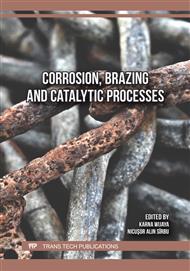[1]
Mtex on-line documentation: https://mtex-toolbox.github.io/Documentation (accessed Jul 28, 2024)
Google Scholar
[2]
Matlab, The MathWorks, Inc. 1984-2024, https://de.mathworks.com/ accessed: Jul 28, 2024.
Google Scholar
[3]
F. Bachmann, R. Hielscher and H. Schaeben: Solid State Phenomena 160 (2010), p.63
Google Scholar
[4]
Information on https://mtex-toolbox.github.io/MTEXvsBungeConvention.html (accessed Jul 28, 2024)
Google Scholar
[5]
Information on https://mtex-toolbox.github.io/publications (accessed Jul 28, 2024)
Google Scholar
[6]
https://de.mathworks.com/help/fusion/ug/rotations-orientation-and-quaternions.html (accessed Jul 28, 2024)
Google Scholar
[7]
H.-J. Bunge: Mathematische Methoden der Texturanalyse (Akademie Verlag, Berlin 1969)
Google Scholar
[8]
H.-J. Bunge: Texture Analysis in Materials Science - Mathematical Methods (Butterworths, London Boston Sydney Wellington Durban Toronto 1982)[9] R. Hielscher and H. Schaeben: J. Appl. Cryst. 41 (2008), p.1024
Google Scholar
[10]
R.A. Beauregard and J.B. Fraleigh: A First Course In Linear Algebra: with Optional Introduction to Groups, Rings, and Fields (Houghton Mifflin Company, Boston, USA 1973).
Google Scholar
[11]
S. Lang: Linear Algebra, 3rd edition (Springer, New York - Berlin - Heidelberg - Hong Kong London - Milan - Paris - Tokyo 1987)
Google Scholar
[12]
S.L. Altmann: Rotations, Quaternions, and Double Groups (Oxford University Press, Oxford 1986)
Google Scholar
[13]
Information on https://mtex-toolbox.github.io/DefinitionAsCoordinateTransform. html (accessed Jul 28, 2024)
Google Scholar
[14]
A. Novelia and O.M. O'Reilly: Regul. Chaot. Dyn. 20 (2015), p.729
Google Scholar
[15]
S. Helgason: The Radon Transform (Birkhäuser, Boston, MA, USA 1980)
Google Scholar
[16]
J. Pospiech: Kristall und Technik 7 (1972), p.1057
Google Scholar
[17]
J. Pospiech, A. Gnatek and K. Fichtner: Kristall und Technik 9 (1974), p.729
Google Scholar
[18]
A. Morawiec: Orientations and Rotations - Computations in Crystallographic Textures (Springer, Berlin - Heidelberg 2004)
Google Scholar
[19]
O. Engler, S. Zaefferer and V. Randle: Introduction to Texture Analysis: Macrotexture, Microtexture, and Orientation Mapping, 3rd Edition (CRC Press Taylor & Francis, Boca Raton, FL, USA 2024)
DOI: 10.1201/9781003258339
Google Scholar
[20]
S. Matthies, G.W. Vinel and K. Helming: Standard distributions in texture analysis: maps for the case of cubic-orthorhombic symmetry (Akademie-Verlag, Berlin 1987)
DOI: 10.1515/9783112736173
Google Scholar
[21]
V. Klosek: EPJ Web of Conferences 155, 00005 (2017) https://doi.org/10.1051/epjconf/201715500005 (accessed Jul 28, 2024)
Google Scholar


